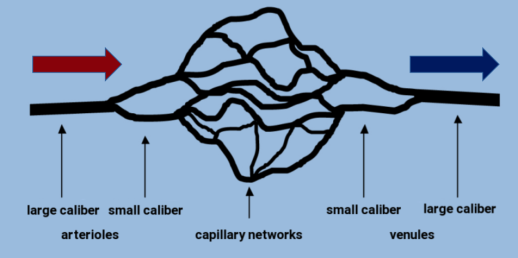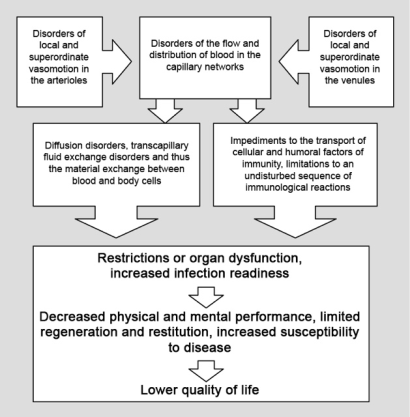IVO TORRES FILHO, MD, PHD
Dr. Ivo Torres’ research focus has played a significant role in our ability to understand physiological mechanisms in health and disease as it relates to microcirculation. By applying novel techniques and methods, he and his teams use various experimental strategies to investigate the pathophysiology of specific cardiovascular conditions and their treatment. He was one of the pioneers in the early research of vasomotion in a bat wing model. The main focus of his recent studies have been directed towards endothelial cell function, specifically on the glycocalyx structure and function in vivo. As part of the translational physiology research, his studies also focus on hemorrhagic shock, and factors that affect the local distribution of oxygen and blood flow. A key and unique component of the approach is to integrate traditional systemic physiological parameters, blood biomarkers, and microvascular variables such as;microvascular permeability, leukocyte-endothelial interactions, platelet-endothelial interactions, and local blood flow measurements in addition to in vivo glycocalyx determinations. With his extensive experience as research physiologist at the Damage Control Resuscitation Group as well as the US Army Institute of Surgical Research, Dr. Torres has held a key position in the United States Department of Defense research team.
RAINER C. KLOPP, MD, PHD
Dr. Rainer Klopp founded the Institute for Microcirculation in Berlin, Germany and is a leading researcher in the field of Microcirculation. He has over 120 scientific publications in scientific and clinical research and is the recipient of multiple scientific awards. Dr. Klopp has conducted world-renowned research in the fields of Biophysics, Cardiology, Angiology, Oncology, Internal Medicine and Dermatology. He is the founder of the Institute for Microcirculation in Berlin, Germany. Dr. Klopp was commissioned by the International Society of Geriatrics to investigate non-invasive, non-drug alternatives to assist geriatrics with chronic conditions, reducing their need for pharmaceutical medications and medical treatments. He is also a holder of multiple patents and an innovator of technology in science and medicine.
JOSHUA D. BERKA, NMD
Dr. Joshua Berka is certified as a Naturopathic Doctor, Diplomate of Acupuncture, and is a certified Functional Medicine practitioner. He has served as an educator and clinician both in the U.S. and abroad. Dr. Berka is also an adjunct faculty member of the Institute of Functional Medicine and has been an Integrative Medicine advocate for many years. His goal has been to build networks, supporting the process of bridging the scientific communities and medical disciplines in support of healthcare and wellness. He specializes in the use of PEMF and LASER Therapies in both clinical and home healthcare. Dr. Berka is a member of the Microcirculation Society in San Diego, CA. He serves as the medical director of Infinity Health Source and BEMER USA as well as board member of multiple organizations.
ULISES BALTAZAR, MD, FACS, RVT
Dr. Ulises Baltazar has vast experience treating venous insufficiency, varicose veins and venous stasis ulcers using laser, radio frequency, mechano-chemical ablation and surgery. Dr. Baltazar completed his medical education at La Salle School of Medicine in 1986. He finished his general surgery residency at the General Hospital of Mexico City followed by general surgery training at East Tennessee State University in Johnson City, where he was administrative chief resident and received the award for outstanding performance. He then finished a vascular and endovascular surgery residency at Baylor College of Medicine in Houston, Texas where he was again the administrative chief resident and received an award for his performance. Dr. Baltazar is certified by the American Board of Surgery in vascular surgery, is a Fellow of the American College of Surgeons and a member of the American College of Phlebology. He is also certified by the American Registry for Diagnostic Medical Sonography as registered vascular technologist and registered physician in vascular interpretation. Dr. Baltazar is a Vascular Surgeon at Methodist Hospital in Sugar Land, Texas.
ROBERT B. CHESNE, MD, FACC
Dr. Robert Chesne is board certified in Internal Medicine and Cardiology. He is also involved in academic education in his position as Associate Clinical Professor of Medicine at University of Southern California School of Medicine and Director of the Coronary Care Unit at the Hospital of the Good Samaritan, Los Angeles, California. Dr. Chesne is dedicated to his clinical practice and teaching and has multiple scientific publications regarding vasculature conditions that have provided much support and insight to the research community. His involvement as Director of Cardiology and Chief of Staff at Centinela Freeman Hospital Medical Center has been a remarkable contribution. Dr. Chesne has also contributed his expertise and talent as the Director of Cardiology at the Tommy Lasorda Heart Institute.
SUNIL PAI, MD
Dr. Sunil Pai is a board certified Medical Doctor in Holistic Integrative Medicine. Dr. Pai completed his residency in Family Medicine at the University of New Mexico. He is certified by Dr. Deepak Chopra as a Primordial Sound Meditation Instructor and a Creating Health (Ayurveda Lifestyle) Instructor. He is also certified in Functional Medicine, Physiological Regulating Medicine, Medical Acupuncture and Neuro-Acupuncture through UCLA and Stanford University School of Medicine. Dr. Pai is the Vice President of the Neuro-Acupuncture Institute, a non-profit organization focused on teaching physicians neuro-acupuncture to treat pain conditions and neurological dysfunction such as stroke, Multiple Sclerosis, Parkinson’s disease and traumatic brain injury. Dr. Pai is a Deacon of the House of Sanjevani Integrative Medicine Health & Lifestyle Center located in Albuquerque, New Mexico. As a nonprofit organization, they provide full service health education and Integrative Medicine services with emphasis on indigenous and natural medicines. Dr. Pai recently released his highly anticipated book, An Inflammation Nation, which describes the health benefits of plant-based diets and the use of natural anti-inflammatories for the prevention and treatment of chronic diseases and cancer.
D. TODD WYLIE, OD, FCOVD
Dr. Todd Wylie is board certified in Vision Development and Vision Therapy by the College of Optometry in Vision Development. His love for innovative technology has advanced his treatment methods in vision care and rehabilitation at his private practice in Spokane, Washington. Dr. Wylie is also the charter member of the Neuro-Optometric Rehabilitation Association. As a medical director of Advanced Eye Care & Optical, Dr. Wylie’s innovative vision care techniques truly delivered many remarkable results by his patients. Dr. Wylie thoroughly enjoys helping children and adults with vision-related learning disabilities, head trauma rehabilitation utilizing nutrition, PEMF therapy, and other treatment modalities to help improve eye health and wellness.
CAREY BENENSON-TAUSSIG, DO (MP)
Dr. Carey Benenson-Taussig is a certified graduate of the Collège d’Études Ostéopathiques and is affiliated with the Swiss International School of Osteopathy (SICO) as well as the Canadian School of Osteopathy in Vancouver, British Colombia. Dr. Benenson-Taussig specializes in Visceral Manipulation in her practice and is known for her work with the brain, Lyme disease, auto-immune disorders, and performs chemical and nutritional analyses. She is trained in the traditional philosophy of Osteopathy and has a Bachelor’s degree in Mass Communication from Boston University. Dr. Benenson-Taussig enjoys public speaking both locally and internationally by offering her lectures on the healing potential of the human body according to classical Osteopathic principles as well as in the field of biodynamics. She also holds a weekly educational radio program, Balance Point, and is known for her achievements in her work with the brain and the immune system.



